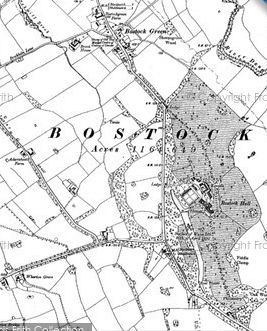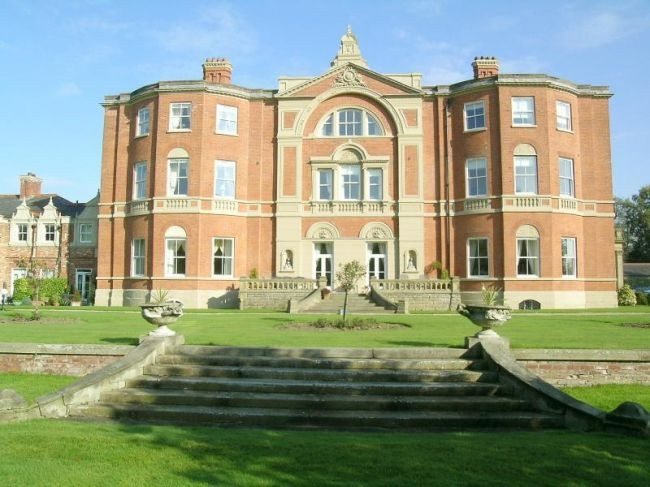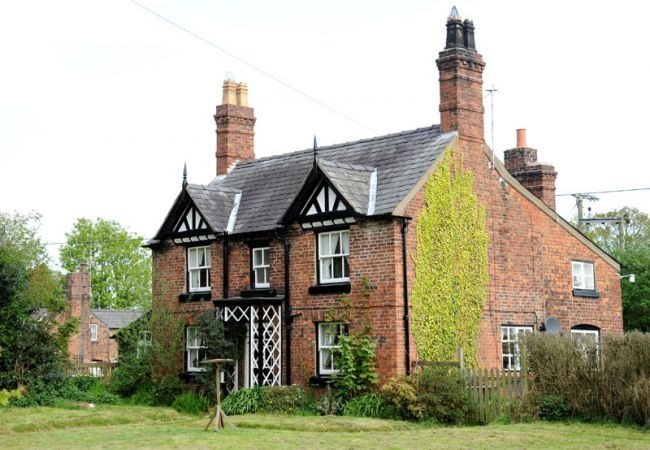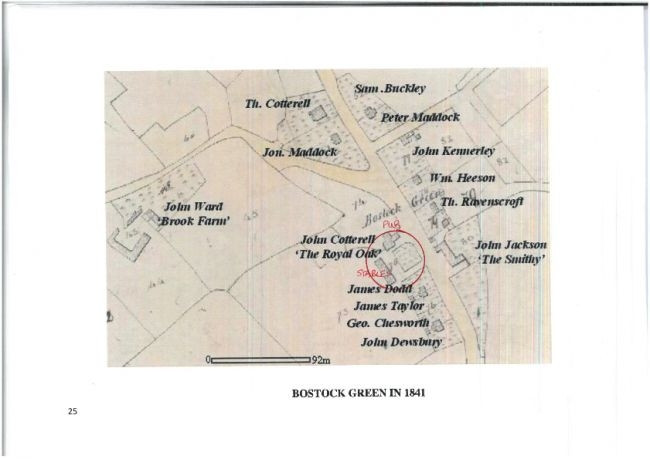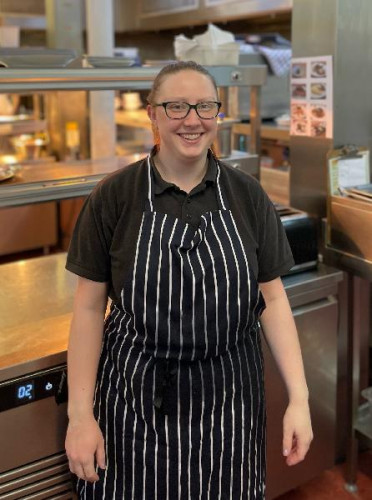We are much indebted to Tony Bostock and Jane McLellan and their thoroughly researched publication "Bostock. A History of a Village and its People", which has informed just about all of of this article. Many thanks for them for allowing us to reproduce their research on this page. Their book is currently sold out and is out of print, but it may well be re-published.
Bostock Village
The origins of Bostock Village lie in Saxon times, though much of the present day village dates from the 18th century, and is virtually unchanged thanks to its status as a private country estate. The village sits in a noted Conservation Area which should help protect it for generations to come.
Many notable families have been associated with the village over the centuries, and we have named the pub the Hayhurst Arms after the France-Hayhurst family who built the property.
As Henry Brooks wrote in his foreword to the Bostock History book, "..it is the families who built, maintained, lived and live in (Bostock) who have always made it and kept it so special...it is the perfect example of a 'model village', the only one I know of that can claim a reading room/social club, laundry, village hall, bowling green and pavilion..."
The France-Hayhursts
Thomas Hayhurst was the first of the family to own land and estates at Bostock in the late 1790's. He changed his surname to "France" in accordance with his uncle James France's wishes, who had bought Bostock manor and lands for Thomas at a cost of £44,600.
The France Hayhurst family tree
The family name of France-Hayhurst came to prominence in 1869 when the Reverend Thomas France-Hayhurst succeeded to the manor and Bostock House on the death of his brother, James France France (it was common practice to give children a middle name which was the surname of their maternal grandmother - hence James France France). Bostock House was later re-named Bostock Hall when Old Bostock Hall was demolished.
The France-Hayhursts were by all accounts model landlords: not only was the estate especially beautiful, but very few English estates were in such good order. The landscaped gardens were famous, and the family would frequently open them to the village. In addition to other good works, the family built cottages for their staff including, in the early 20th century, Arthur Statham the gardener, Joseph Waring a steward, Miss Ravenscroft the estate laundress and Sam Henshaw the smith.
Bostock Pavilion and fete
In 1912, the then Lord of the Manor, Colonel Charles Hosken France-Hayhurst , donated the village green, which had been a paddock, to the community, in commemoration of the Coronation of King George V. He had spent much time and money levelling the land and seeding it, and he commissioned an ingenious black and white Pavilion, whose interior of folding polished pine partitions could be configured in a variety of ways to form separate rooms.
The oak tree opposite the pub, enclosed with a low fence and bearing commemorative plaques, is of symbolic significance to the villagers, as it marks the centre of the original County of Chester. The first oak on the spot was already mature when it was illustrated in a 1795 watercolour by Kenyon (featured on the front cover of the Bostock History book), but it was felled in 1887 as being a 'danger to traffic', and the present oak was planted that year to commemorate Queen Victoria's Golden Jubilee.

Bostock Reading Rooms and Parish Rooms
What is now the Hayhurst Arms was built in 1845 as the Reading Rooms and Parish Rooms, an example of the philanthropy of the France-Hayhurst family.
The 1870's saw improvements to estate cottages which included the addition of black and white gables and decorative trellis porches - some of which are still in place today.
At this time many of the public' buildings were constructed by the France-Hayhursts, including the village pump and Tenants' Hall, which was used as the venue for the annual village Christmas party when gifts from the family were distributed. In 1905 Col France-Hayhurst built the village Laundry and in the same year he provided a new water supply for the village at the cost of £400.
The Reading Rooms existed alongside the original pub in the village, which lay at right angles to the property and the road. The pub, which at different times had been called The Bull's Head, The Wolf's Head, The Trees, The France Arms, The Royal Oak, and The Five Oaks, is clearly marked on maps of 1796 and 1840, though it is not known when this original property was demolished.
Also featured on the maps of 1796 and 1840 are a group of stables and a coach house behind the original pub, which still exist and which we have incorporated into the structure of the Hayhurst Arms, meaning that a portion of the property, the section to the right of the entrance if you have your back to the Green, was built before 1796.
By 1914 the Reading Rooms had been renamed Bostock Working Men's Club and Parish Rooms', and it was re-named again as the Bostock Social Club in 1923.
In the 1920's and 30's, Captain William Hosken France-Hayhurst was the head of the family. He was High Sheriff of Cheshire, and under his leadership Bostock was a happy, content and thriving agricultural community. Captain William was particularly interested in polo and established a stud which was recognised as one of the finest in the country. He established modern agricultural practices and built Bostock Hall Farm as a modern dairy farm with an award-winning herd. He was President of the Middlewich and District Agricultural Show and President of the Chester Chamber of Agriculture.
Captain William died in 1947 and Bostock Hall was sold in 1948, so ending the association of the France-Hayhursts with Bostock.
Jeannie France-Hayhurst, who kindly allowed us to use the family coat of arms as our pub sign, reports that many of her ancestors were members of the cloth, including Thomas France-Hayhurst who lived at Davenham Rectory and spent £10,000 in 1860 on tiling the chancel in Minton tiles - a whopping sum then.
She also reports that there are some rather more jolly people in the family tree including the somewhat colourful privateer (Fortunatus Wright) who was licensed by the government to plunder French shipping.
Fortunatus Wright
Fortunatus Wright was the captain of a privateer. It is important to distinguish between pirates and privateers, though they were both essentially engaged in the same business. A pirate is someone who basically captures and plunders ships for personal reward, whereas a privateer, during times of war, is licenced by his government to harass enemy ships and disrupt their trade. In effect, a privateer was a private warship, sponsored by investors who hoped to make a profit from captured enemy shipping and trade goods.
Any capture made by a privateer had to be judged by an Admiralty court which decided whether they were 'fair and legal' prize. If the were, the captured ships and cargoes would be auctioned off and the proceeds split between the privateer's officers, crew and owners.
Fortunatus' brigantine, Fame', under his incredibly skilled seamanship, had extraordinary success against the French - by the end of December 1746, Fame had captured no less than sixteen French as prizes in the eastern Mediterranean, with a value in those days of £400,000, including a much larger vessel of 20 guns and 150 men which had been especially commissioned to hunt down Fortunatus Wright.


